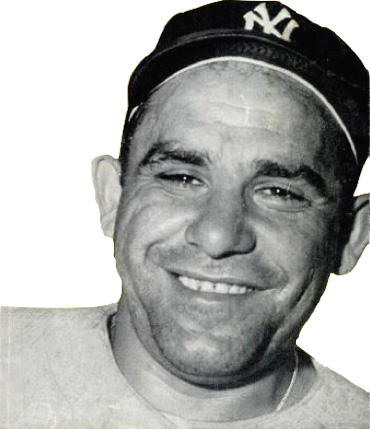The great Yogi Berra was quoted as saying “You can see a lot by observing”. I’ve heard this many times over the years and like others, thought it was pretty funny. As I got older though, I started to understand that there really is wisdom behind these simple words. I don’t know if Yogi realized it or not, but seeing is indeed different than observing.
We see things every day. We see terrible drivers during our commute; we see our poor performers at work and people behaving badly in general. The question is – even though we see these people, do we take the time to really observe them? What’s the difference? If you think about it, seeing is primarily passive. It requires no action on our part; things pass before our eyes and simply exist. Observation, on the other hand requires action. It leads to questions which require us to draw conclusions. In turn, we get involved at a deeper level. This doesn’t mean that we spend hours trying to figure out what’s going on – it simply means we are forced to make an attempt, which can take mere seconds. Think about that terrible driver during your commute. You “see” the car cutting in and out of traffic at a high rate of speed, you think “That idiot is going to hurt somebody” and you move on to deciding between a latte and a cappuccino. But what if instead of just seeing the car, you observe it? Do you start to wonder why the car is moving so fast? What’s happening that makes it necessary to drive like that? Now you’re involved. Probably not to a great degree – but enough to see the driver as fellow human who may have a reason for driving the way he does. At that moment your thoughts and subsequent actions shift from the negative (idiot) to positive (concern). It’s easier to accept things as negative if we don’t look too closely under the hood. When observations lead to questions, the process itself facilitates understanding. Passive seeing doesn’t do this. It accepts what is which can lead to the wrong course of action
Case in point: Years ago, during a regular morning meeting one of my direct reports lost his temper and began yelling at me. What did I see? I saw a man who had lost his temper and someone who was behaving very unprofessionally. As a manager, I saw a situation that was rapidly getting out of control and realized that I had to take immediate action. I also saw the rest of my staff looking at me for resolution. If I didn’t handle it correctly the resulting loss of confidence in me from the rest of the staff, would make my job that much harder in the future. There was no doubt that my employee’s behavior warranted disciplinary action. What I saw that morning in fact, was not what I observed. I observed someone acting so far out of character that it caused me concern. I observed a man that was going through something so intense that it caused him to be very angry and I quickly realized that the reason for his outburst didn’t have a thing to do with me or whatever I was talking about that morning.
After the meeting, we went into the office and I simply said “This is so unlike you that I’m concerned. Are you OK?” Of course the answer was “no”. He finally told me that a close friend had died the night before and the effect it was having on him. At that point, I did not act on what I had seen (the yelling, the anger) but I acted on what I had observed (the pain). I sent him home and asked him to call me if there was anything I could do for him. Just because his actions warranted discipline didn’t mean it was the right way to handle the situation. I think Yogi would have understood.
